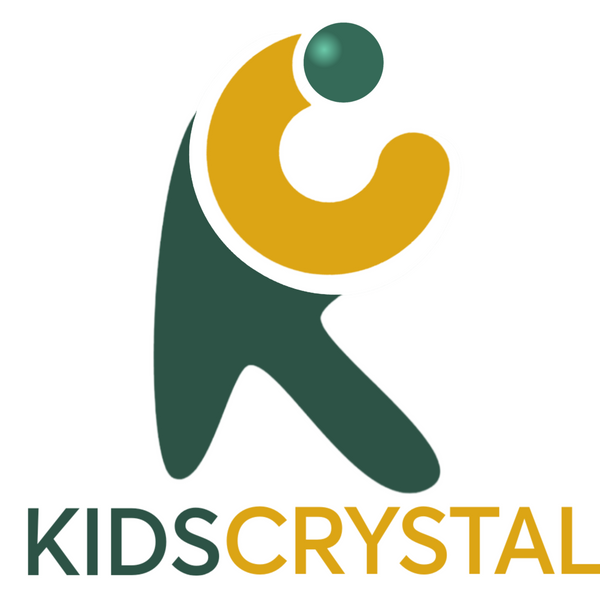Key Takeaways
- Children can safely start sandbox play around 12 months when they can sit unsupported with proper supervision
- Most kids enjoy sandbox play until 8+ years old, with interest varying based on creativity and variety of activities
- Sandbox play offers crucial developmental benefits including motor skills, sensory exploration, and social learning
- Canadian families should choose weather-resistant sandboxes with covers and quality play sand for year-round enjoyment
- Fresh sandbox games and accessories help maintain children's interest and extend play value over the years
Introduction
Have you wondered when can kids play in sandbox safely and what age do kids stop playing in sandbox? At Kids Crystal, we know Canadian families want the best outdoor sandboxes that support healthy play and development. This blog shares expert-backed age recommendations, practical safety advice, and developmental benefits to guide parents in creating fun, safe, and engaging backyard play spaces. Learn about exciting sandboxes games, buying tips, and how to keep sandbox play safe and enjoyable throughout childhood.
Recommended Age to Start Playing in a Sandbox
Children can begin sandbox play from about 12 months old, when they can sit unsupported and have developed sufficient motor control. This recommendation is supported by the US Consumer Product Safety Commission (CPSC) and Toy Industry Association guidelines, which emphasize the importance of developmental readiness over strict age limits.
Supervision is crucial for children under 3 years due to several important safety considerations. Young toddlers naturally explore the world through their mouths, making sand ingestion a primary concern. Additionally, outdoor sandboxes can contain debris, insects, or contaminants that pose health risks to curious little ones.
For younger infants who aren't quite ready for traditional sandbox play, sensory bins offer an excellent alternative. These controlled play environments can be filled with safe materials like oatmeal, shredded paper, or specially cleaned sand, allowing babies to explore textures and develop sensory skills in a safer setting.
Here's how sandbox readiness develops across different age ranges:
|
Age Range |
Key Considerations |
Recommendations |
|
0-12 months |
Sensory exploration, limited sandbox play |
Sensory bin play recommended |
|
12-36 months |
Sitting unsupported, hand-eye coordination development |
Supervised sandbox play |
|
3+ years |
Increased independence, social and imaginative play |
Reduced supervision, creative play encouraged |
What age can kids play in sandbox independently?
Most children can enjoy more independent sandbox play around 3 years old, though adult supervision should always be nearby. At this stage, they understand basic safety rules and are less likely to eat sand or put contaminated items in their mouths.
The transition from supervised to semi-independent play typically occurs gradually. Parents can start by staying within arm's reach during the first year of sandbox play, then gradually increase the distance while maintaining visual supervision as children demonstrate safe play behaviors.
What Age Do Kids Stop Playing in a Sandbox? Why?
Interest in sandbox play varies widely among children, with many enjoying sand play well into their elementary school years – often up to 8 years old or beyond. The answer to what age do kids stop playing in sandbox isn't straightforward, as it depends on several factors including personality, available activities, and how parents maintain the play environment.
Children may lose interest if a sandbox lacks variety or new stimulation. This is why many families notice their kids gravitating away from the sandbox around school age – not because they've outgrown it, but because the play has become repetitive or predictable.
Parents often observe a decline in sandbox interest around ages 6-7, coinciding with increased structured activities, sports, and digital entertainment options. However, many children continue to use sand for sensory regulation, imaginative play, or as a social space when friends visit.
Keeping sandbox games fresh is key to supporting longer engagement. Children who have access to varied sandbox accessories, themed play ideas, and rotating activities often maintain interest much longer than those with static setups.
Several factors influence when children naturally transition away from sandbox play:
- Peer influence: As friends develop different interests, sandbox play may seem less appealing
- Physical development: Older children may prefer more physically challenging activities
- Cognitive growth: Complex building projects might require different materials and spaces
- Seasonal access: Canadian weather can limit sandbox availability, potentially disrupting play patterns
- Available alternatives: Access to other outdoor activities, sports, or technology
The good news for Canadian families: even children who seem to have "outgrown" sandbox play often rediscover it during summer months, family gatherings, or when introduced to new sandbox games and challenges.
Benefits of Sandbox Play Across Ages
Sandbox play offers remarkable developmental benefits that evolve as children grow, making it a worthwhile investment for families wondering what age do kids play in sandbox activities most beneficially.
Motor skills development stands out as one of the most significant benefits. Digging, scooping, and pouring activities improve hand-eye coordination and strengthen the small muscles in hands and fingers – crucial skills for writing, drawing, and other fine motor tasks. For toddlers, these movements help develop bilateral coordination (using both hands together), while older children can tackle more complex construction projects that require precise movements and planning.
Sensory development occurs naturally through sandbox play as children explore different textures, temperatures, and weights. The tactile experience of sand running through fingers, the resistance felt when digging, and the various textures created by adding water all contribute to healthy sensory processing development. This is particularly beneficial for children with sensory processing differences.
Social skills flourish in sandbox environments where children must share space, tools, and ideas. Group sandcastle building teaches cooperation, compromise, and communication. Children learn to negotiate ("Can I use the bucket next?"), collaborate ("Let's build this together!"), and resolve conflicts – all essential life skills.
Creative and imaginative play transforms ordinary sand into endless possibilities. Younger children might create simple hills and holes, while older kids develop elaborate storylines involving construction sites, archaeological digs, or fantasy kingdoms. This type of unstructured, child-directed play supports cognitive flexibility and creative problem-solving abilities.
|
Developmental Benefit |
Description |
Play Examples |
|
Motor Skills |
Builds arm/hand coordination |
Digging, filling buckets |
|
Sensory Exploration |
Explores textures and tactile sensations |
Feeling sand, mixing materials |
|
Social Learning |
Promotes interaction and sharing |
Group sandcastle building |
|
Creative Play |
Stimulates imagination and storytelling |
Acting out "beach" or "construction" |
The adaptability of sandbox play means benefits continue evolving as children grow. Toddlers focus on cause-and-effect learning (pouring sand makes piles), while school-age children engage in complex engineering challenges (building bridges or tunnels that won't collapse).
For Canadian families, year-round benefits can be maintained by bringing sand play indoors during harsh weather months, using smaller sensory bins or sand tables that fit in basements or playrooms.
Practical Tips for Canadian Families Buying Outdoor Sandboxes
Choosing the right sandbox for Canadian weather conditions requires careful consideration of materials, design, and maintenance features. Our harsh winters, wet springs, and variable summers demand sandboxes that can withstand temperature fluctuations and moisture exposure.
Sandbox covers are non-negotiable for Canadian families. A quality cover keeps out debris, prevents animal contamination, and protects sand from becoming waterlogged during heavy rains. Look for covers that fit securely and are made from weather-resistant materials that won't crack in freezing temperatures.
Material selection significantly impacts longevity and safety. Cedar and other naturally rot-resistant woods perform well in Canadian climates, especially when properly treated for moisture resistance. Heavy-duty plastic options offer excellent durability and easier maintenance, though they may become brittle in extreme cold. Avoid untreated pine or softwoods that deteriorate quickly in moisture.
Size considerations should account for your yard space, the number of children who will play simultaneously, and room for sandbox accessories. A good rule of thumb: allow at least 3 feet by 3 feet for one child, with additional space for each additional player. Remember that children need room to move around the perimeter of the sandbox safely.
Quality play sand makes a tremendous difference in play value and safety. Ask local suppliers about "play sand" or "sandbox sand" that's been washed, screened, and tested for safety. Avoid construction sand, which may contain harmful particles or chemicals. Many Canadian home improvement stores stock appropriate sandbox sand, or you can find specialized suppliers through Kids Crystal's sandbox collection.
Drainage planning prevents many headaches. Canadian spring melt and summer storms can quickly create muddy, unusable sand. Consider sandbox designs with drainage holes or raised bottoms that allow excess water to escape while retaining sand.
Seasonal storage solutions extend sandbox life in harsh Canadian winters. Some families cover their sandbox with tarps and snow, while others store portable units in garages or sheds. Plan for this when making your purchase decision.
Sandbox games and accessories keep play fresh and engaging. Rotating different tools, molds, and themed accessories prevents boredom and extends the age range for active play. Consider building a collection of sandbox toys that can be stored easily and rotated seasonally.
Safety Considerations for Different Ages
Age-appropriate supervision levels ensure safe, enjoyable sandbox play throughout childhood. For children 12-36 months, constant adult presence within arm's reach is essential. These young explorers need immediate intervention to prevent sand ingestion and ensure safe play behaviors.
Creating safe boundaries helps children understand sandbox rules from an early age. Simple, consistent rules like "sand stays in the sandbox," "no throwing sand," and "wash hands after playing" establish good habits that support lifelong safe play.
Regular sandbox maintenance prevents health hazards and maintains play quality. Weekly sand raking removes debris and redistributes moisture, while monthly deep cleaning may involve replacing contaminated sand or addressing drainage issues.
Canadian-specific safety concerns include protecting sandbox areas from wildlife, managing freeze-thaw cycles that can damage sandbox structures, and ensuring adequate sun protection during intense summer months.
FAQs
1. Where can I buy safe sand for a kids sandbox?
Canadian families can purchase play-grade sand from home improvement stores like Home Depot or Lowe's, local landscaping suppliers, or specialty toy retailers. Always ask for "play sand" or "sandbox sand" that's been washed and screened. Avoid construction sand or sandbox sand with unknown origins. Kids Crystal can also recommend trusted suppliers in your area.
2. How to keep cats out of kids sandbox?
Install a fitted cover that completely seals the sandbox when not in use. Motion-activated sprinklers, citrus peels scattered around the perimeter, or commercial cat deterrent sprays can also help. Some families create a dedicated cat area elsewhere in the yard to redirect feline attention.
3. How should I maintain the sandbox to keep it safe?
Rake sand weekly to check for debris and redistribute moisture. Replace sand annually or when it becomes significantly contaminated. Clean sandbox walls monthly with mild soap solution. Inspect covers and hardware regularly for damage. During Canadian winters, proper covering prevents ice damage and contamination.
4. How to get rid of ants in kids sandbox?
Remove the source of attraction by cleaning up food debris immediately after play. Sprinkle food-grade diatomaceous earth around the sandbox perimeter (not directly in play sand). Coffee grounds or cinnamon can also deter ants naturally. For persistent problems, relocate the sandbox away from ant colonies.
5. How to keep bugs out of kids sandbox?
Regular sand disturbance through play and raking discourages many insects from establishing homes. Cedar chips around the sandbox perimeter naturally repel many bugs. Ensure proper drainage to avoid standing water that attracts mosquitoes. During peak bug season, consider temporary mesh covers for active play periods.





